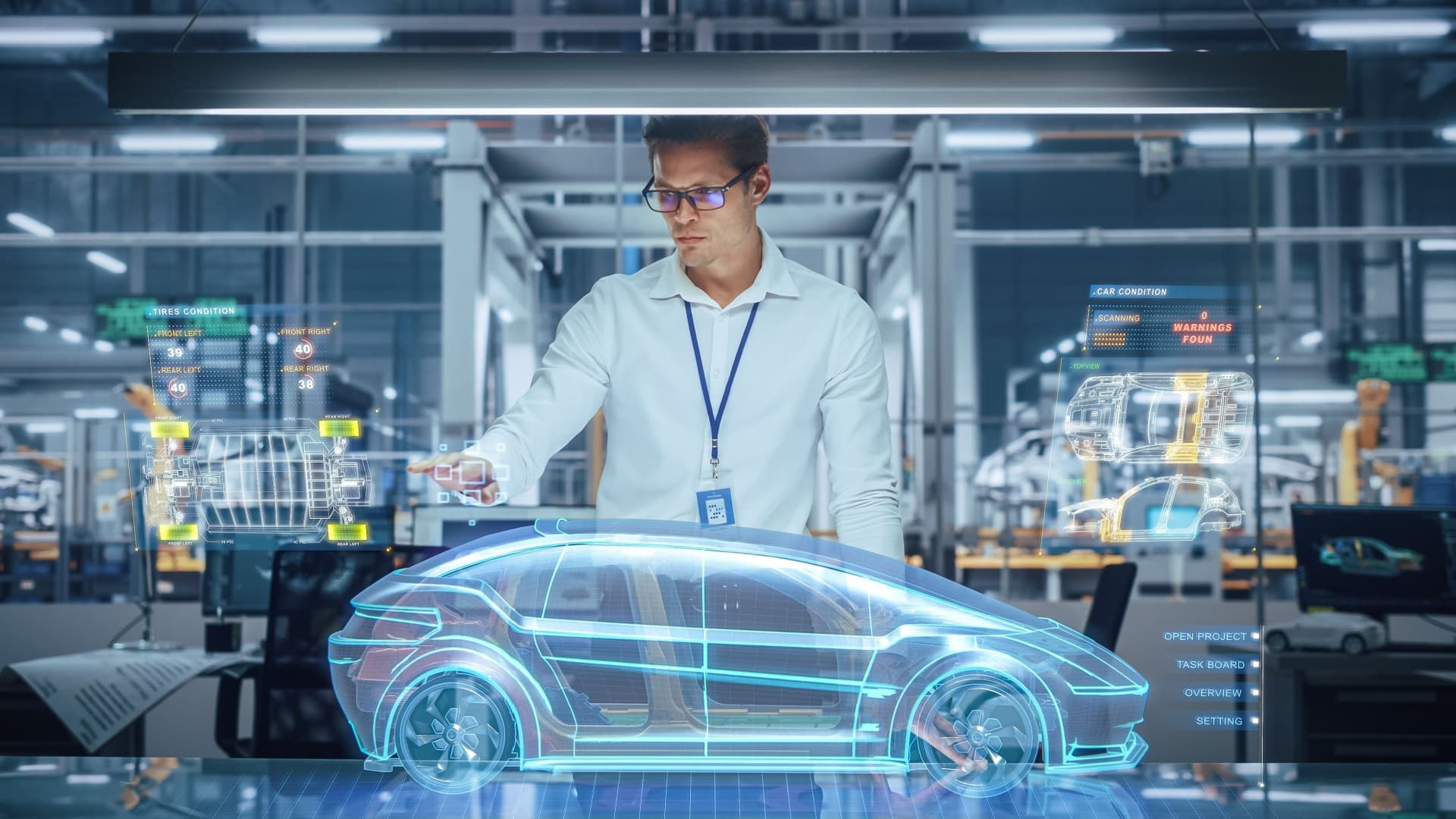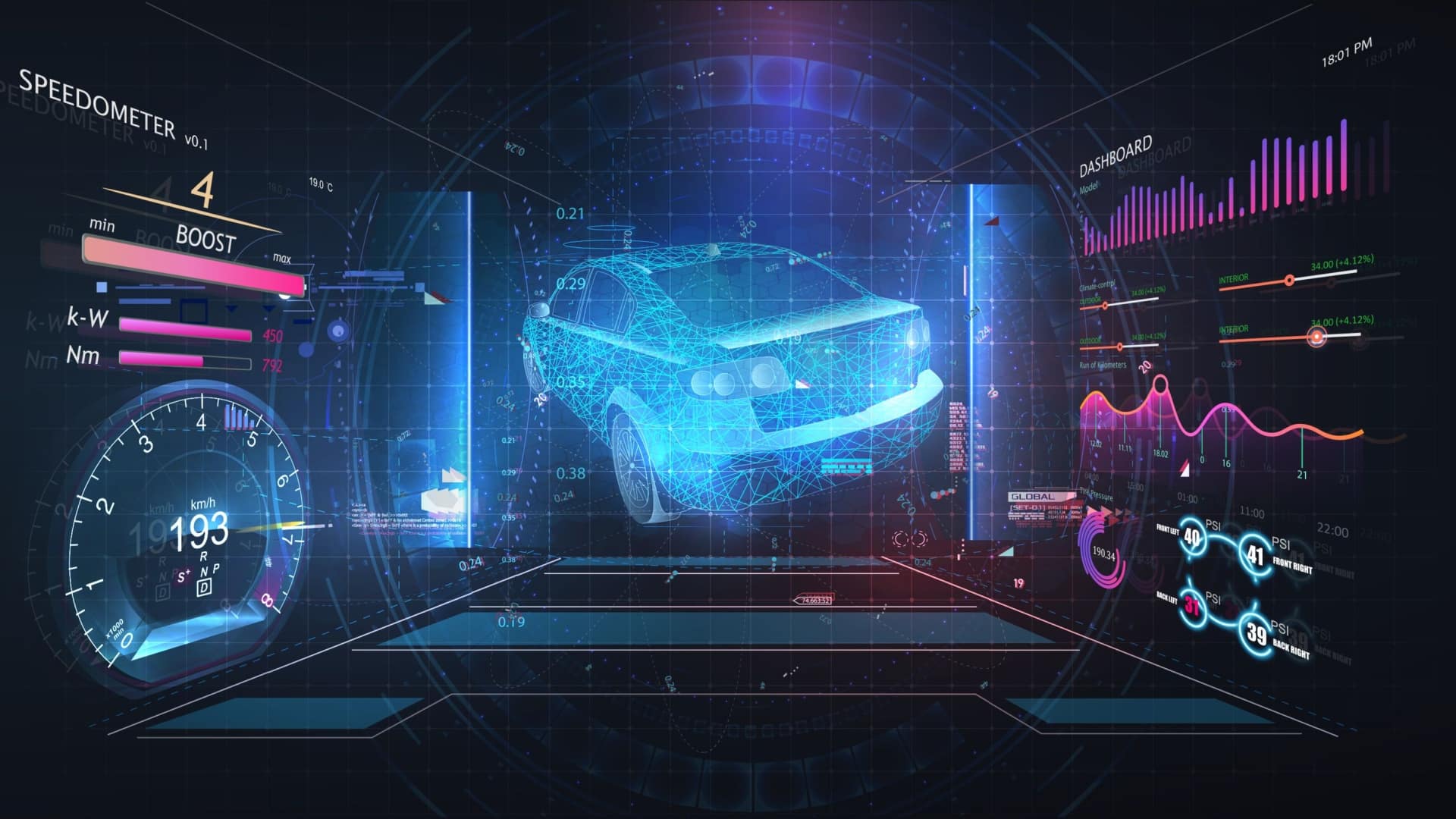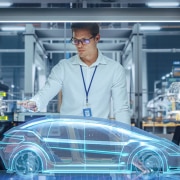The Evolution and Impact of Holographic Displays in the Automotive Sector

Why Holography in the Automotive Industry?
Rise of Holography in Automotive Applications
Holography’s introduction into the car sector represents a move from conventional display technologies to interactive systems that boost driver safety and passenger comfort. Holography in automobiles was designed for better information visibility and readability while limiting the need for drivers to look away from the road. The application now uses high-resolution holographic display car technology to deliver real-time, spatially correct visual data to the driver. Holographic HUDs project navigation, vehicle status, and environmental data onto the windshield, forming holographic floating images like augmented reality that seem part of the road. Algorithms maintain visual clarity and stability under changing illumination and vehicle motions. AR and holography can also display virtual lane markings and hazard identification icons that adjust with the vehicle’s movements. It helps improve alertness and safe driving.
Transformative Impact of Holographic Technology in the Automotive Sector
Mixed reality experiences from holography will transform in-vehicle entertainment, design, and usefulness. Companies are testing mixed reality applications that blend real-world views with virtual overlays for better car design and safety testing. Such applications use holographic technology to mimic driving situations in real time. It gives insights into car behavior in different conditions without prototypes. Adaptive holographic headlights diminish glare and enhance visibility at night while projecting light at many intensities and angles according to road conditions and traffic. The market for holographic applications might double to $30 billion by 2025. Displaying convoluted data in 3D without screens or devices lowers interior design constraints and opens up new vehicle-to-driver communication. It renders driving safer and changes the automotive scenery.
Understanding Holographic Displays
About Holographic Displays
Holographic technology catches and reconstructs an object’s light waves to create a three-dimensional image with the same viewing angles and depth. The main idea is to capture the interference pattern between a reference beam and an object beam. Holographic media, including photopolymers or digital sensors, record the intensity and phase of light waves reflected off an object. Meanwhile, holographic display car dashboards increase navigation and vehicle diagnostics while offering depth and making data more accessible.
How Holographic Projectors Work
Holographic projectors generate high-resolution, 3D images that float in space by manipulating light. A hologram’s data controls SLMs (spatial light modulator), which control light’s amplitude, phase, or both. Coherent light from a laser travels through these modulators that modify its features based on rapid computer algorithms for 3D visuals. These tweaks reproduce the object’s light patterns for a realistic 3D representation. For example, in automobile applications, a car’s holographic display may utilize algorithms to calculate light modulation changes that correlate to real-time sensor data, which updates the projections quickly. This technology’s accuracy enables image resolutions that render virtual and real images indistinguishable. It optimizes user satisfaction and security in holographic display car interfaces.
Applications in Automotive Design

Integration of Holographic Displays in Automotive Dashboards
Car dashboards featuring holographic displays are changing how drivers interact with their cars. It projects 3D images above the dashboard to show navigation maps and driving data in real-time without blocking the driver’s vision. Holographic displays may give dynamic navigation signals that float at a comfortable viewing distance. It decreases the need for drivers to concentrate between the road and the information display. While placing information in a spatial context that matches the external world, these systems heighten the state of mind and cut cognitive strain.
Enhancement of Driver Experience through Augmented Reality Interfaces
AR using holographic displays enriches the driving experience while merging virtual and real-world information. For instance, AR is utilized in the Genesis GV80 to overlay the driving path and turn-by-turn instructions on the vehicle’s central screen. It increases guidance accuracy and driver safety while keeping eyes on the road. Holographic AR interfaces are used in ADAS for safety. Mercedes-Benz’s MBUX Hyperscreen uses AR for better driving aid cues, including collision warnings, which are projected into the driver’s field of sight. It decreases response times by displaying risks in the driver’s view. Additionally, holographic display car technology integration is supported by computational backends that process real-time data from vehicle sensors and external data streams. It enables complex visualizations to be updated instantaneously as driving conditions change.
Beyond the Dashboard: Broader Applications of Holography
Holographic Technology in Automotive Events and Brand Experiences
Holographic technologies may make automobile events and brand encounters more engaging. At vehicle exhibitions, carmakers may use large-scale hologram projections to highlight their newest cars’ aerodynamics and mechanics. These displays let spectators look through the car’s bodywork and monitor airflow dynamics in real time. It promotes comprehension and engagement without prototypes. Integrating holographic interfaces into brand experiences lets clients select automobile color, wheel design, and interior finishes in an interactive 3D realm. Such attractive customizations empower customers to feel more connected to the brand.
Non-Traditional Application of Holographic Technology in Automotive
Holographic technology also boosts vehicle maintenance. For example, holography can improve service diagnostics while projecting a 3D representation of a car’s engine or other essential systems to pinpoint problem areas. Holographic signals indicate wear and damage so mechanics can see concealed components without disassembly. It cuts service time and strengthens repair accuracy. As electric cars become more prevalent, holographic displays might teach technicians to maintain high-voltage systems for lower workplace accidents.
The Future of Holographic Displays in the Automotive Industry
Recent Advancements in Holographic Display Car Technology
Holographic display car technology has grown. The global automotive holographic display market will grow 17.3% from 2023 to 2029, from $2042.7 million to $5329.2 million. Companies have devised passive 3D technology and dual-display systems that increase depth perception and user involvement without glasses. These optical stacks refract light differently to each viewer’s viewpoint. It makes steering and car diagnostics more realistic. SLMs alter light waves’ phase and amplitude for high-fidelity 3D visuals. Newer variants with 1 µm pixel pitches provide larger viewing angles and better-quality holograms. Integrated AR headsets point to a future where design and safety testing can use mixed reality on the road for real-time data cover and environmental interaction without traditional displays.
Potential Future Developments and Implications
Future advances in holographic display technology could also impact other industries. In aviation, similar technologies might provide pilots with holographic flight data and weather predictions for better reaction times and decision-making. In healthcare, while showing surgeons 3D anatomical information in real-time, holographic screens could alter surgery. High-resolution, real-time holographic imaging devices that provide precise organ images are being investigated to cut surgical mistakes and boost results. These innovations will demand computational power while requiring GPUs and specialized holographic processing units to handle the massive data and complicated algorithms to render holographic content flawlessly.
Discover Our Innovations
FIC has created holographic display car technologies that use light scattering and interference for 3D images that float in mid-air without a screen. So, our applications go beyond automotive to elevators that display to meet epidemic prevention needs. We’re also improving gesture control sensitivity to render our holographic displays more intuitive and responsive. See our latest inventions to discover these cutting-edge developments.





